Editor’s note: In recent weeks, Shanghai has had extraordinary visits by three species of crane. Since 12 Nov., 3 Siberian Crane, a Critically Endangered species, have been recorded regularly in a reclaimed area of Hengsha Island (photo above, left). On 10 Dec., Endangered Red-crowned Crane made the first recorded visit by that species to Cape Nanhui (top right). Also since 12 Nov., Vulnerable Hooded Crane has been recorded regularly at Cape Nanhui (bottom right). Before 12 Nov., Hooded Crane had never been recorded on the Shanghai Peninsula. (Craig Brelsford)
by Craig Brelsford
Founder, shanghaibirding.com
The appearance on 10 Dec. of 2 Red-crowned Crane at Pudong’s Cape Nanhui was more than just a historic, first-ever sighting. It was a message. The endangered cranes, as well as the Siberian Crane on Hengsha Island and Hooded Crane at Cape Nanhui, are telling us that habitat is steadily disappearing elsewhere along the Chinese coast, particularly in Jiangsu; that the habitats in Shanghai are some of the best that remain; and that those habitats require world-class protection. The most pressing need is the creation of a world-class, small to mid-sized wetland reserve at Cape Nanhui.
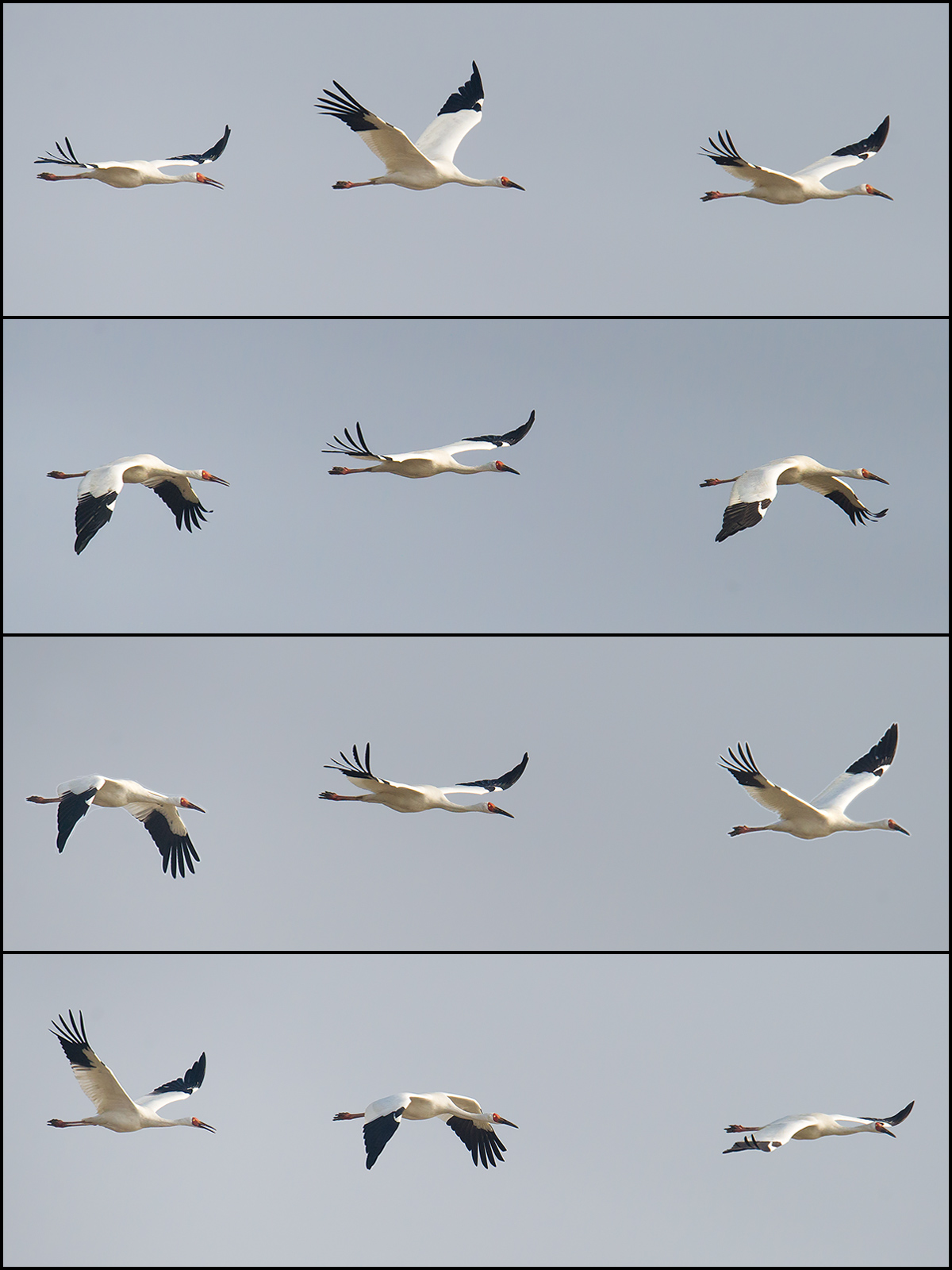
Errant cranes migrating along the Chinese coast may once have settled for a while somewhere in Jiangsu. Every year, however, cranes migrating along the coast of that densely populated province find fewer and fewer places suitable to them. My wife Elaine Du and I have surveyed the Jiangsu coastline from Qidong on the Yangtze River 250 km north to Yancheng National Nature Reserve. We have seen with our own eyes the dramatic transformation of the Jiangsu coast. Even areas in Jiangsu receiving considerable international attention, such as Yangkou and the coastal areas of Dongtai, are under threat.
Cape Nanhui may not seem like a first-rate natural area, but it is in better condition than almost any place I have seen between Qidong and Yancheng. I say, therefore, that the recent crane sightings in Shanghai have come about in large part because elsewhere so much has been lost. The cranes have nowhere else to go.
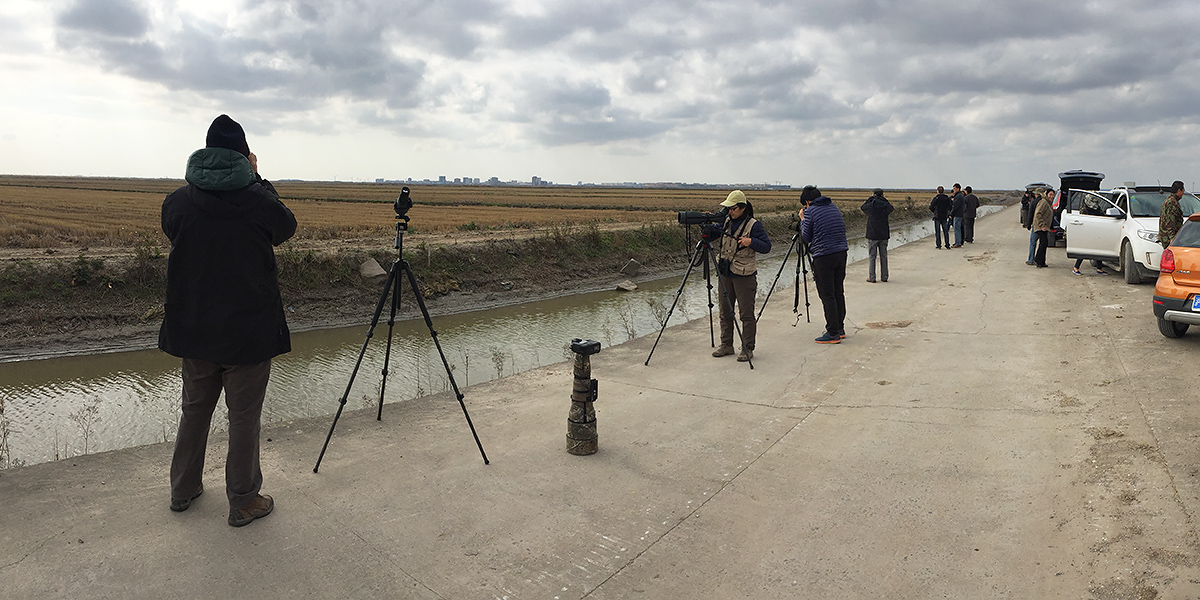
And that is why conserving Cape Nanhui is so important. Shanghai is facing a crisis, a “danger-opportunity” (危机). The 危 or danger is that amid the wholesale destruction of so much coastal habitat elsewhere, Shanghai will follow suit and destroy its remaining good habitat. The 机 or opportunity is for Shanghai to gather into its bosom the birds ejected from Jiangsu—to be not only the economic but also the conservationist leader on the Chinese coast. The creation at Cape Nanhui of an easily accessible, world-class, small to mid-sized wetland reserve along the lines of Sungei Buloh in Singapore would be a way of avoiding the 危 and seizing the 机.
The case for an easily accessible wetland reserve at Cape Nanhui could scarcely be more clear-cut:
(1) Cape Nanhui is of extraordinary environmental importance. The tip of the Shanghai Peninsula between the Yangtze River and Hangzhou Bay, Cape Nanhui is a stepping stone for birds migrating across those bodies of water. Cape Nanhui also holds large reed beds, habitat critical to Reed Parrotbill and other species at risk.
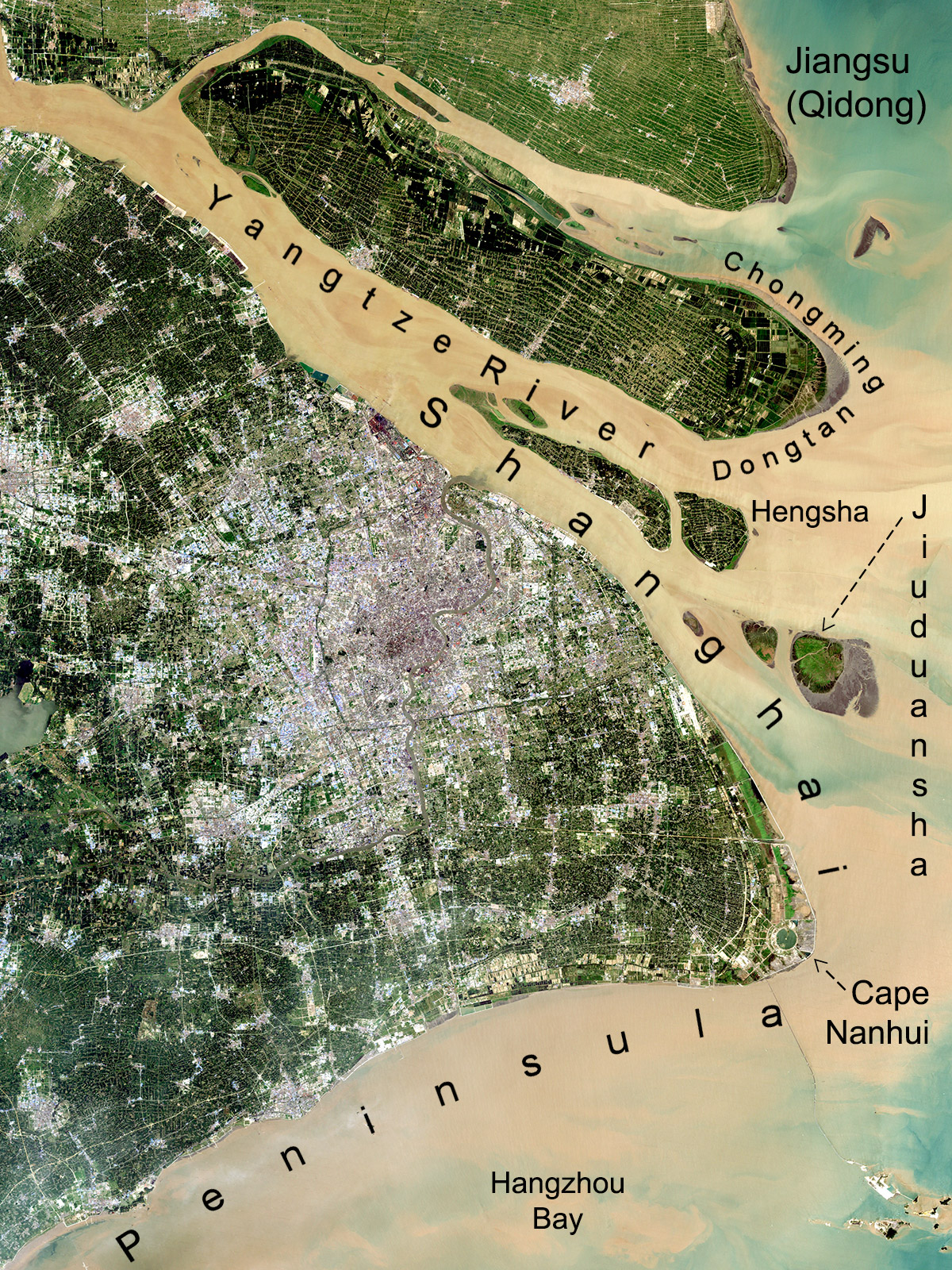
The 2 Red-crowned Crane this past Saturday were the latest in a parade of endangered birds that I and other birders have noted at the Cape over the years. Critically Endangered Spoon-billed Sandpiper uses Cape Nanhui, as does Endangered Nordmann’s Greenshank. Around 2 percent of the world’s Endangered Black-faced Spoonbill are dependent on Cape Nanhui for several months each year. Large reed beds remain at Cape Nanhui and are the final strongholds on the Shanghai Peninsula of Near Threatened Marsh Grassbird and Near Threatened Reed Parrotbill. The latter species, a candidate for Shanghai Provincial Bird, will virtually disappear from mainland Shanghai if the reed beds at Nanhui are destroyed.
(2) Shanghai is clearly under-performing on the conservationist front. More must be done, and a good place to begin is Cape Nanhui.
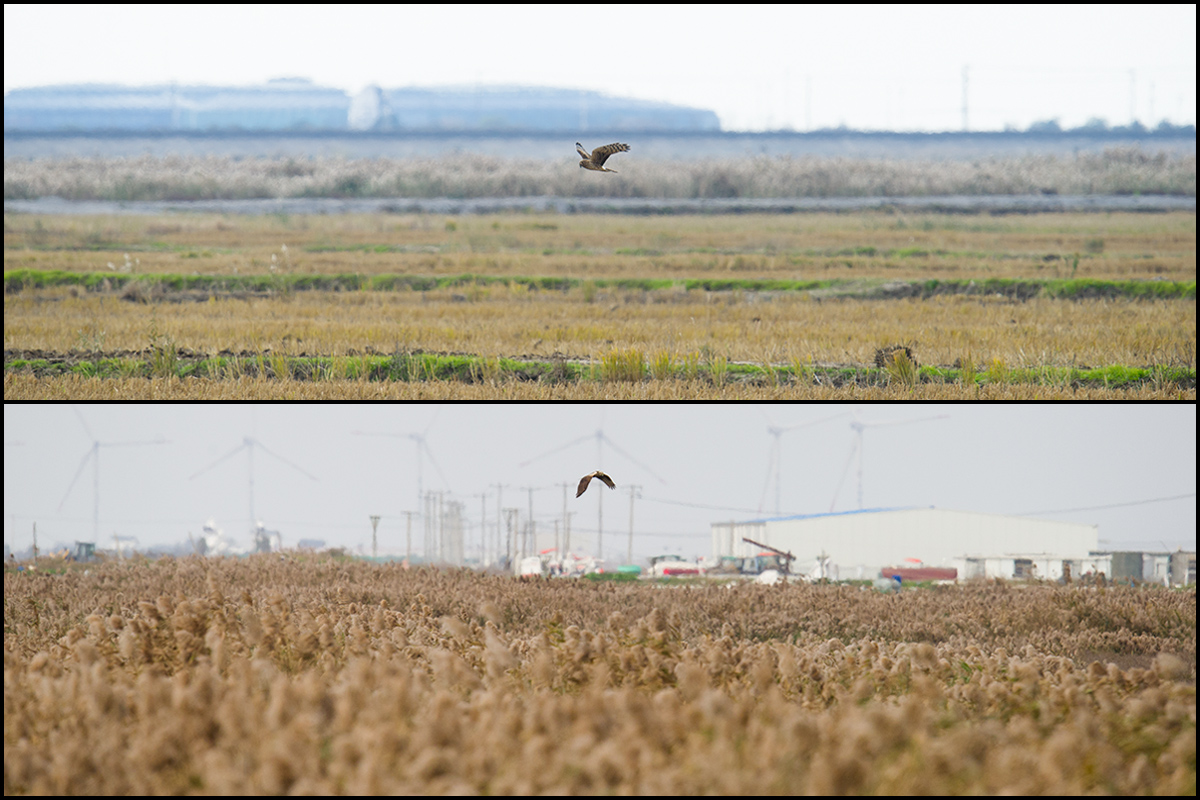
Nature reserves have been established only on the extreme fringes of the city-province (which is a third the size of Wales). There are no reserves in mainland Pudong, a giant coastal district nearly twice the size of Singapore. Nowhere in this megalopolis can residents without a car enjoy the natural side of Shanghai, a city with an extraordinarily rich natural heritage. There is no known plan to conserve any of the dozens of square kilometers of reclaimed land on Hengsha.
(3) Because it is in the back yard of Shanghai, a city-province of more than 25 million people, a well-run, easily accessible wetland reserve at Cape Nanhui could be the match to light the fire of conservation across all China.
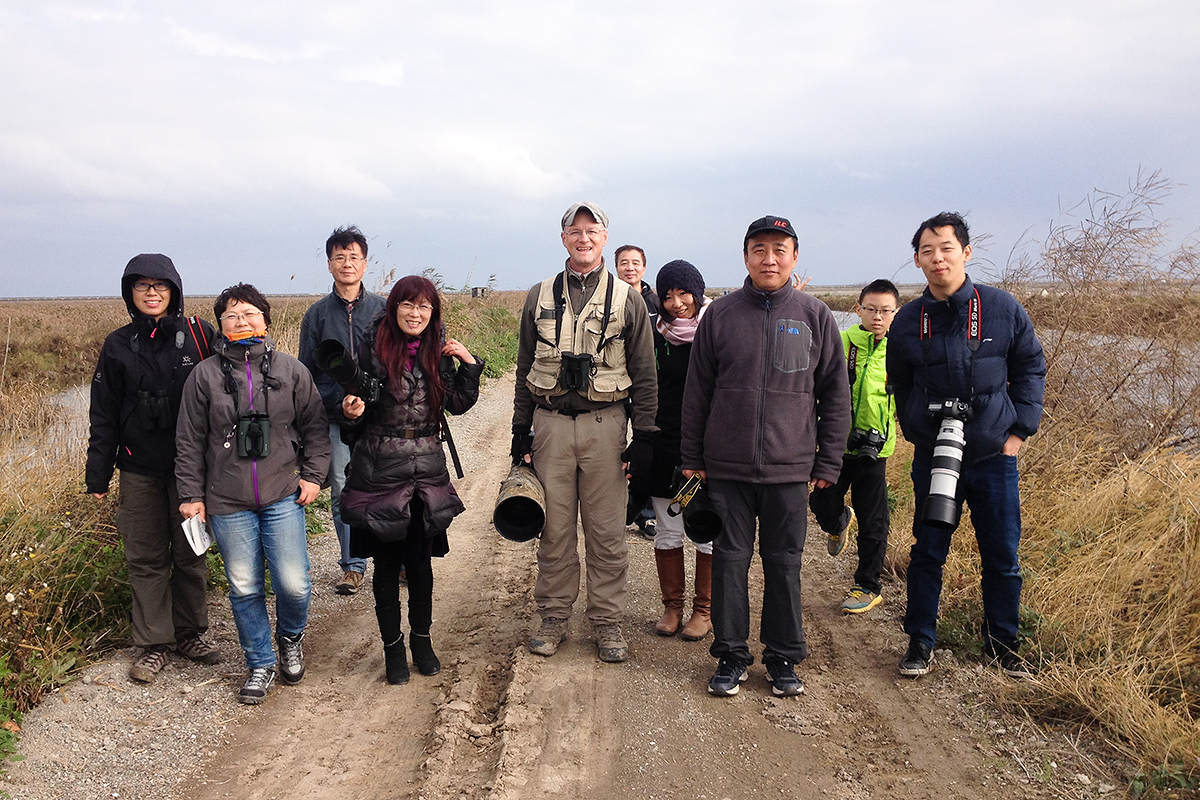
Hundreds of thousands of children could visit the reserve with their parents using nothing more than the Metro and a quick taxi ride and be sleeping in their own bed that night, dreaming about the wild birds they had seen that day. For millions of parents and their kids, the weekend could be “Saturday, Disney; Sunday, Cape Nanhui Wetland.” A day at a Cape Nanhui Wetland would be an early introduction to the glories of natural Shanghai and would foster an appreciation of the natural world.
If Shanghai can be a world economic center and have world-class airports and a world-class skyline and world-class entertainment such as Disney, then it can and must have world-class preservation of its priceless coastline and migratory birds.
I repeat: The case for a world-class, easily accessible wetland reserve at Cape Nanhui could scarcely be more clear-cut.

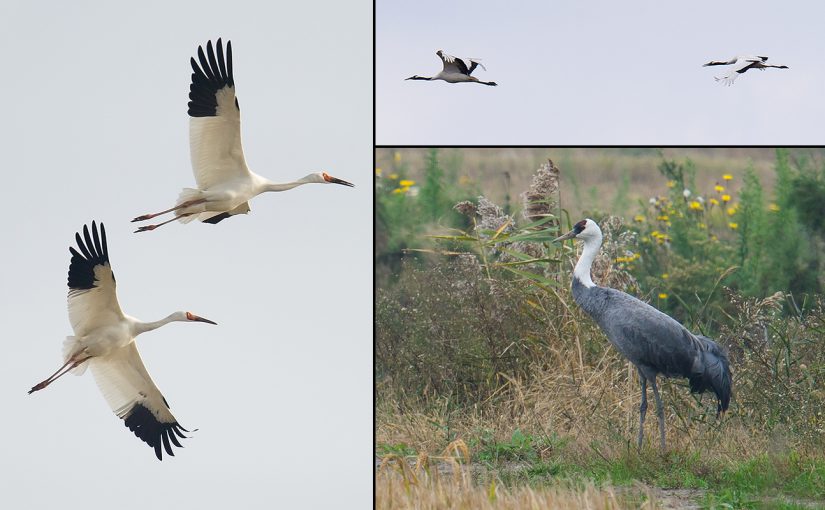
We are happy that we joined the birding on 10 Dec. The two Red-crowned Crane were amazing. Seeing any species of crane in Nanhui would be big news, but in this case it’s the first record of these beautiful birds in this area. Also, Red-crowned Crane is a symbol of longevity and nobility in China. On the other hand, the appearance of Red-crowned Crane may be a sign that areas near Nanhui are being destroyed. Nanhui too is under threat. Just on the same day we saw the cranes, a new fence went up, the big area inside the fence may be reclaimed, and if it’s true, we don’t know where all these beautiful birds are going to rest. We have more and more buildings, actually too many, but we have fewer and fewer birds, it’s too bad.
Nir Sapir and I visited Shi Jiu Lake in Jiangsu (south of Nanjing) today, as we had heard that Siberian Cranes had been seen there in recent days. With help of colleagues from Nanjing, we were taken on a small fishing boat into the middle of the lake to view some extensive muddy / vegetated areas.
Unfortunately, the weather conditions were very poor and visibility was terrible… we did see very distantly 4 all-white birds which we felt had a crane ‘jizz’ and appeared v large, but conditions were so poor we could not be certain.
I was wondering if you know if this lake is a well-known location for Siberian Cranes, as I can’t find anything on the web.
Thanks for writing, and thanks for this detailed report of an interesting sighting. I had never heard of Shi Jiu Lake before reading your message. It’s plausible that Siberian Crane could be at Shi Jiu Lake, as it is in the neighborhood of Poyang Lake, the main wintering ground of the species. Note also that Siberian Crane can stray, as I noted in this post.
It also seems plausible that your white birds seen in poor viewing conditions could have been Siberian Crane. Another large white bird that you ought to consider is Oriental Stork.